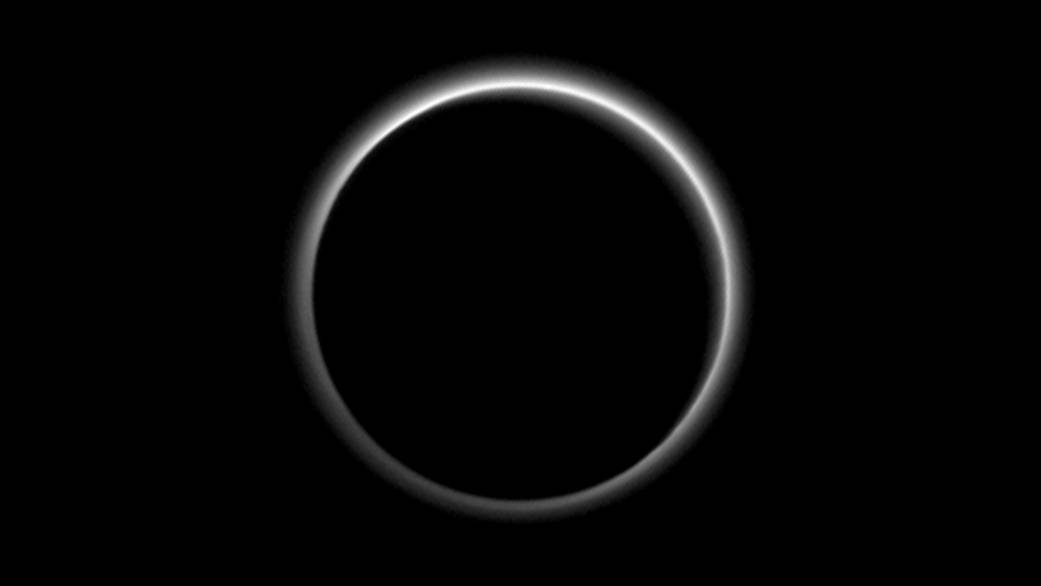What an age we live in. This summer marks the very first opposition of Pluto since New Horizons’ historic flyby of the distant world in July 2015. If you were like us, you sat transfixed during the crucial flyby phase, the climax of a decade long mission. We now live in an era where Pluto and its massive moon Charon are a known worlds, something that even Pluto discoverer Clyde Tombaugh never got to see.
Pluto in 2016
And this summer, with a little skill and patience and a good-sized telescope, you can see Pluto for yourself. Opposition 2016 sees the remote world looping through the star-rich fields of eastern Sagittarius. Hovering around declination 21 degrees south, +14.1 magnitude Pluto is higher in the June skies for observers in the southern hemisphere than the northern, but don’t let that stop you from trying. Opposition occurs on July 7th, when Pluto rises opposite from the setting Sun and rides across the meridian at 29 degrees above the southern horizon for observers based along 40 degrees north latitude at local midnight.
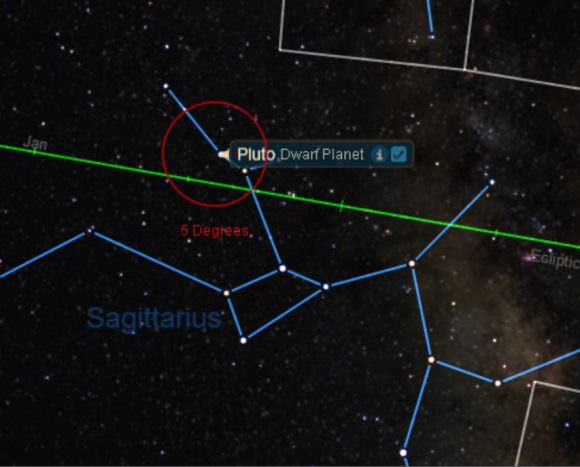
Pluto actually crossed the plane of the galactic equator in 2009, and won’t cross the celestial equator northward until 2109. Fun fact: astronomer Clyde Tombaugh discovered Pluto as it drifted through the constellation Gemini in 1930. Here we are 86 years later, and Pluto has only moved six zodiacal constellations along the ecliptic eastward in its 248 year orbit around the Sun.
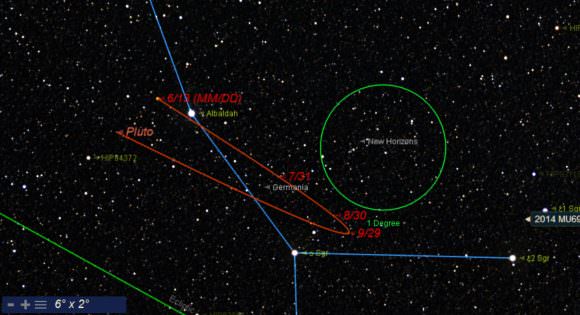
And Pluto is getting tougher to catch in a backyard scope, as well. The reason: Pluto passed perihelion or its closest point to the Sun in 1989 inside the orbit of Neptune, and it’s now headed out to aphelion about a century from now in 2114. Pluto is in a fairly eccentric orbit, ranging from 29.7 astronomical units (AU) to 49.4 AU from the Sun. This also means that Pluto near opposition can range from a favorable magnitude +13.7 near perihelion, to three magnitudes (16 times) fainter near aphelion hovering around magnitude +16.3. Clyde was lucky, in a way. Had Pluto been near aphelion in the 20th century rather than headed towards perihelion, it might have waited much longer for discovery.
2016 sees Pluto shining at +14.1, one magnitude (2.5 times) above the usual quoted mean. See Mars over in the constellation Libra shining at magnitude -1.5? It’s 100^3 (a 5-fold change in magnitude is equal to a factor of 100 in brightness), or over a million times brighter than Pluto.
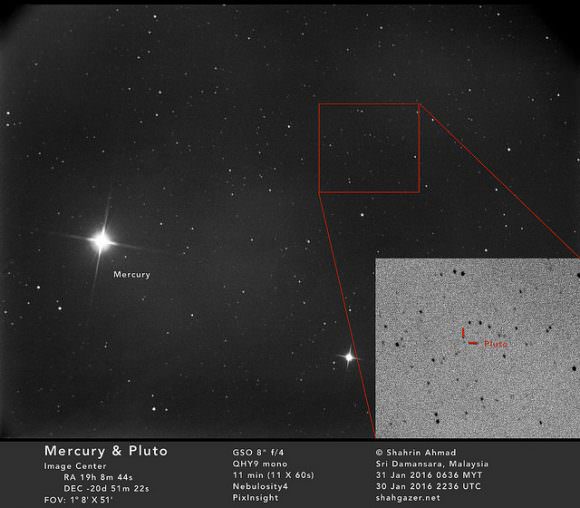
You often see Pluto quoted as visible in a telescope aperture of ‘six inches or larger,’ but for the coming decade, we feel this should be amended to 8 inches and up. We once nabbed Pluto during public viewing using the 14” reflector at the Flandrau observatory.
And how about Pluto’s large moon, Charon? Shining at an even fainter +16th magnitude, Charon never strays more than 0.9” from Pluto… still, diligent amateurs have indeed caught the elusive moon… as did Wendy Clark just last year.
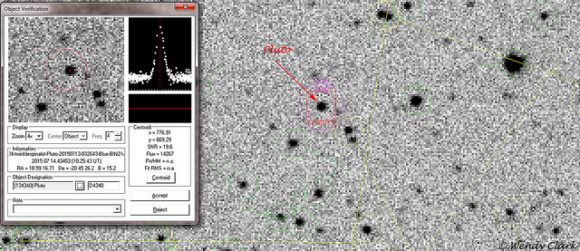
Lacking a telescope? Hey, so are we, as we trek through Morocco this summer… never fear, you can still wave in the general direction of Pluto and New Horizons on the evening of June 21st, one day after the northward solstice and the Full Moon, which passes three degrees north of Pluto.
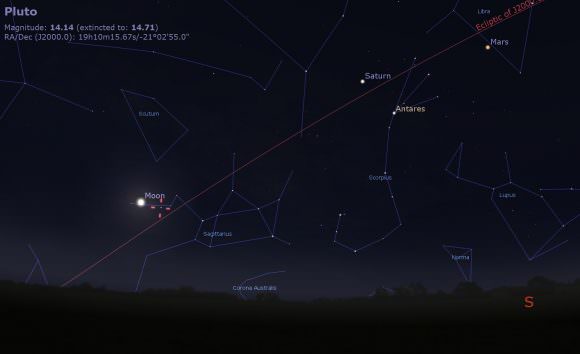
And follow that spacecraft, as New Horizons is set to make a close pass by Kuiper Belt Object 2014 MU69 in January 2019 on New Year’s Day.
A key date to make your quest for Pluto is June 26th, when Pluto sits just 3′ minutes to the south of the +2.9 magnitude star Pi Sagittarii (Albaldah), making a great guidepost.
Does the region of Sagittarius near Pi Sagittarii sound familiar? That’s because the Wow! Signal emanated from a nearby region of the sky on August 15th, 1977. Pluto will cross the border into the constellation Capricornus in 2024.
After opposition, Pluto heads into the evening sky, towards solar conjunction on January 7th, 2017.
Observing Pluto requires patience, dark skies, and a good star chart plotted down to about +15th magnitude. One key problem: many star charts don’t go down this faint. We use Starry Night Pro 7, which includes online access to the USNO catalog and a database of 500 million stars down to magnitude +21, more than enough for most backyard scopes.
Don’t miss a chance to see Pluto for yourself this summer!

